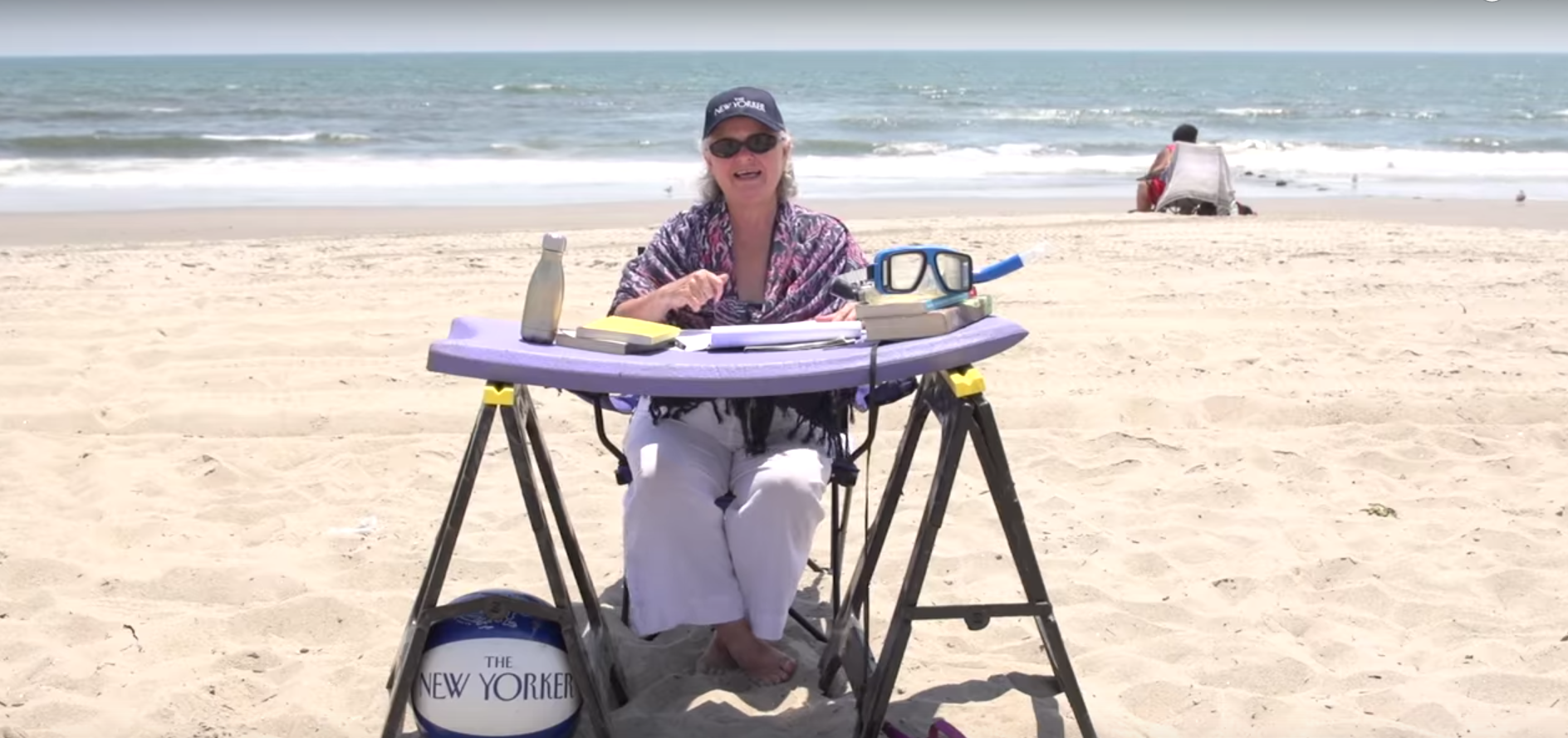
Comma Queen, The New Yorker’s grammar-focused video series, might not seem that promising a concept on paper. In it, longtime magazine copy editor Mary Norris dishes out grammar and style lessons, using examples from current and previous issues of the magazine to illustrate each case. Recent episodes focus on whether the word “none” is singular or plural, dangling participles, and the importance of the serial comma. (Or, as Nieman Lab’s institutional home might prefer it, the Harvard comma.)
But Nicholas Thompson, digital editor at The New Yorker, hasn’t been surprised by the series’ success since it was introduced last year. “I was pretty sure that Mary would be a star when we started it. People love grammar, and she’s both charismatic and brilliant,” he said. Comma Queen, like many of the other videos The New Yorker has produced, is designed to be a natural extension of the brand, born in text (and comics) on the printed page. The magazine has extended its brand in similar ways with the scripted humor series Shorts & Murmurs, (a play on the magazine’s Shouts & Murmurs), and Cartoon Lounge, wherein cartoon editor Bob Mankoff talks about the magazine’s panels. The New Yorker also regularly produces one-off shorts, investigative reports, and recordings of panel discussions with its reporters. As part of its The Screening Room series, the magazine also purchases the rights to film festival documentaries about some of its core subject areas.
Editorially, its videos serve two main roles, said Catherine Spangler, The New Yorker’s video editor. The first is audience development. The potential viewership for the New Yorker’s web videos is significantly larger than the number of people who would subscribe to the magazine. (Videos lie outside the magazine’s paywall, available to all Internet users.) Second, these videos serve to “to pull back the curtain” on what The New Yorker does, Spangler said, bringing readers closer to the people and personalities that shape the magazine each week. “We know that there are people who won’t approach us through reading that will approach us through video,” Thompson said.
That accessibility idea also fuels the magazine’s efforts on Snapchat, where art editor Françoise Mouly each week goes behind the scenes to reveal the thinking behind each issue’s cover. Same for its efforts with Facebook Live, which it has used to broadcast conversations between editors and reporters about big stories. In one case, New Yorker creative director Nicholas Blechman went live to talk about the history of the magazine’s typography and take questions from readers.
The New Yorker has also experimented with what Spangler calls “special issue films,” which are tied to the themes of the magazine’s special issues rather than specific articles. For its April entertainment issue, the magazine produced “Watch Them Whip: A History of Viral Dance Movies,” a three-minute video featuring groups of dancers touring through the last decade of popular dance moves.
The embrace of video is result of two simultaneous, intertwined realities. One, of course, is financial; compared to display advertising, whose prospects continue to dim for many publishers, video ad rates have held up. At the same time, increased reader appetite for video, coupled with increased mobile penetration and broadband speeds, means that digital video consumption has never been higher.
But those forces, while they offer clear strategic tailwinds for publishers, also come with some complications. For The New Yorker, which has spent almost a century building its reputation and relationship with readers, the temptation to leverage its existing brand power to get people to click its videos always has a chance of backfiring. “The risk is that in your enthusiasm to publish lots of videos — because that’s what the market wants and that’s what Facebook wants — you end up publishing stuff that sucks and people’s affinity for the brand declines,” Thompson said. “It’s easier for a new, young site to publish videos frequently and break things and experiment.”
So The New Yorker’s video operation is still pretty small. The video team itself is just four people (including Spangler, two full-time editors and one part-time editor) who produce just a handful of videos each month. That metabolism, low compared to the churn at many other publishers, works in its favor. Spangler said that one of the ironies of the magazine’s digital video operation is that its production speed and workflow is closer to that of a print story — slow, deliberate, and focused on getting the story right rather than producing as many stories as possible.
Despite what Thompson calls some early “chaotic” efforts, The New Yorker has settled into a more comfortable, sustainable video creation process. The video team communicates constantly with not only the magazine’s digital team (which it is a part of) but also its magazine team. The print side of the New Yorker regularly sends around a list of upcoming pieces, which the video team monitors for stories that would benefit from a visual element. The video team also reads manuscript of stories before they’re published, looking for candidates.
Often, these video ideas “can be sparked from a single sentence, or a question that’s not explored in the writing,” said Spangler. “That gives us the freedom to take another pass on the idea and offer something that adds value to the entire package.” Jane Kramer’s October 2015 profile of feminist activist Gloria Steinem, for example, was joined by a four-minute video about why she does’t drive and prefers to be a passenger during car rides.
The topic and form of these videos vary from story to story, but one of the big driving forces throughout all of them is that they remain complementary or even supplementary to the original story — but never redundant.
“You never want to do a video that’s the same thing as the print story,” said Thompson. “The last thing you want is for someone who both read the story and watch the video to feel like they’ve wasted their time.”